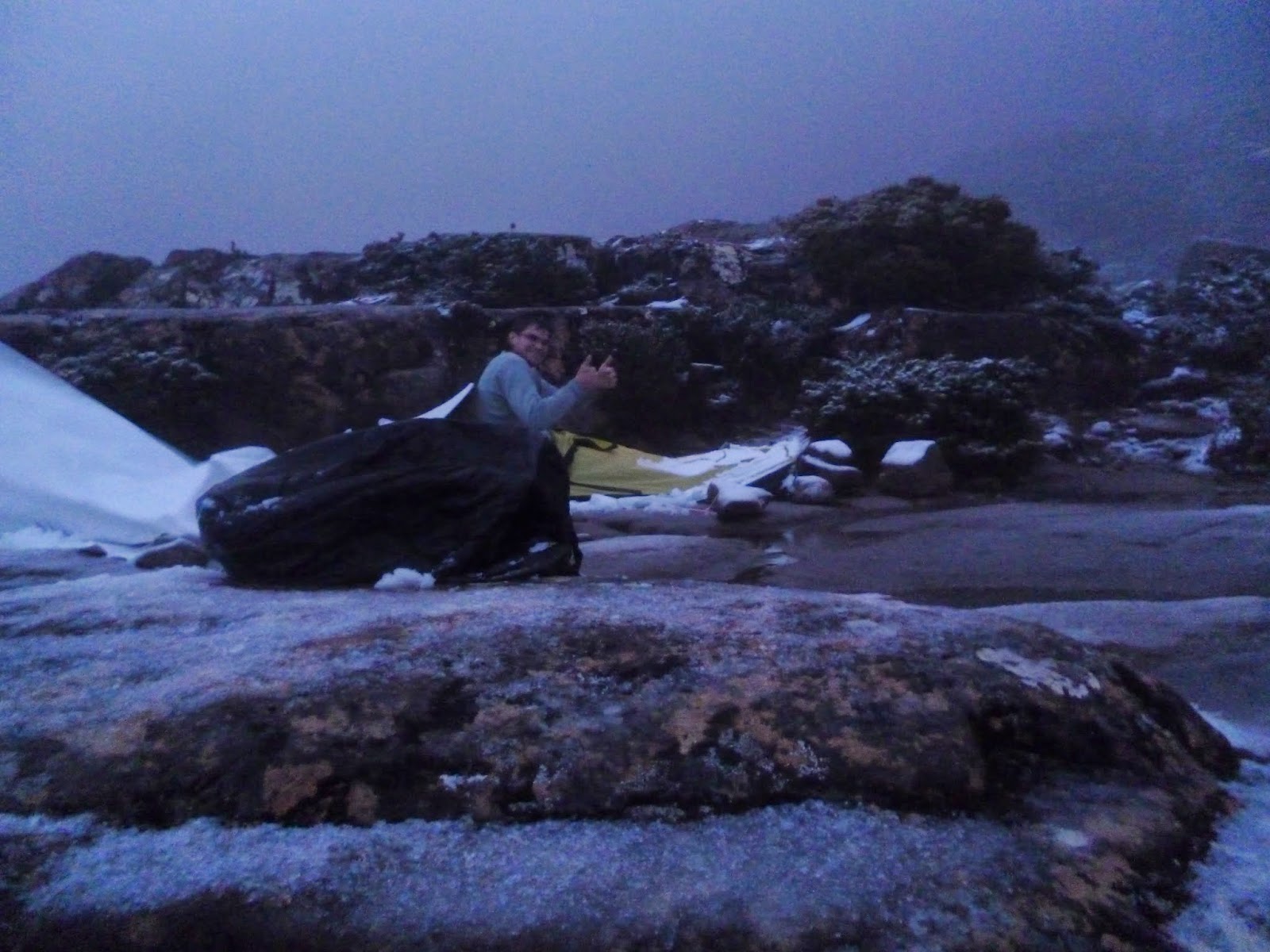In modern hiking we have so much technology to make our
journey safer, lighter, and more comfortable, to protect us from the elements and even nature itself (dirt, bugs, animals etc). But what if you
didn't have your tent, your sleeping bag, and your fancy stove, would you be
able to survive in the wild?
The ability to use the
bare basics at your disposal to turn the odds of survival in your favour is the ultimate challenge. Television shows like Man vs. Wild and Dual
Survival have been incredibly successful by appealing to this primitive drive. As a fellow wilderness survival fan, my brother-in-law Pete and I decided to set ourselves a survival challenge and build and sleep in our own forest shelter. So one Saturday morning in the middle of winter, with the blessings of
our respective wives, we set out for a drive through the Yarra Valley and
across the Black Spur in search of a suitable site.

It was probably 30-minutes into our drive that Pete casually mentioned he had left his tent at home. My immediate thought was that we would need to turn back but that’s when Pete told me he had intentionally left it behind to lend more reality to the survival situation. I was less than impressed at the possibillity of having to share my one-man bivvy with another wet and bedraggled man but nevertheless we continued on sans tent.
Having earlier pored over maps to find a suitable area, we
knew exactly where we wanted to be, so we set out at a good pace and after an
hour, and a few u-turns, we diverged off the 4X4 track into the forest. The
lightly misting rain left a sheen on the foliage of the gum trees, ferns and
bracken, leaving them green and glistening.

By the time we had decided on the site to use, it was early
afternoon. It was continuously raining, so the need to build a feasible shelter before dark made us skip
lunch and work quickly to collect all the materials we needed.
The frame we constructed was a basic leaning roof with a raised floor. We created the floor by using branches resting on the upper slope
and then bracing them to the frame, making it dry and safe from water.
Everything was tied together with small strands of separated nylon rope.
We collected large quantities of foliage to insulate and seal the roof and floor and then found pieces of stringy bark to place on the surface of the roof as makeshift tiles to shed the rain.
.JPG) |
| Clarifying sleeping arrangements: "Don't even think about sleeping next to me you wet smelly man!" |
.JPG)
As darkness threatened we put the finishing touches on the
bedding and went in search of firewood. Everything was sodden. From past
experience we knew what to expect from temperate rainforest and searched at the
base of large trees for partially dry kindling. I started to build the fire and
coax it to life while Pete continued the search for wood.

Once the fire was going, we surrounded it with the wet
timber so that it could begin to dry off in the heat. Finally, it was time for
something to eat! Pete proceeded to eat a whole stick of salami by itself. You would think the hunger had made him desperate but he actually does this anyway. We then cooked food on the fire and rested our sore feet as the last light disappeared and the stars began to appear.
After a satisfying hot meal we set back and yarned about our
day. It wasn’t long before the eyelids started to droop and it was off to bed
in our makeshift shelter. As if to test our resolve, the rain set in strongly. A small amount
of rain dripped through the shelter overnight, just the occasional drip on the
face but it wasn’t enough to actually make me wet. I slept really well.
When I awoke, it was dim morning light, the fire had gone
out and the landscape was blanketed in fog.
It was a beautiful sight to see the lush green ferns and the dark trees
looming out of the whiteness. Over a hot breakfast we chatted about the success of our
shelter and the things we would do differently if we had to build a survival
shelter again. We agreed, the roof was far too high and on too steep an angle resulting in a lot of extra energy spent thatching and waterproofing it. It had also been a mistake to build the shelter downhill from the fire meaning that
the heat didn't effectively warm the area of the sleeping platform. It would
have been better to situate the shelter higher than the fire so that the warmth would
rise and fill the shelter. But overall we had been dry, sheltered from the wind, and relatively warm. All things considered, we
counted our first survival shelter a raging success!
To learn more about making your own survival shelter check out this article from Field and Stream:











































.jpg)

.JPG)



.JPG)